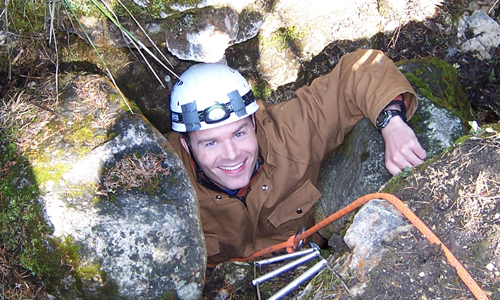Craig Willis - Bats at Risk
Bats at Risk; the Clock is Ticking
Dr. Craig Willis is studying the ecology, behaviour, and physiology of wild mammals. He and his students conduct research about mammalian ecology and evolution, as well as applied conservation research that is important for understanding the impacts of climate change, industrial development, and habitat loss on wildlife. Recently the Willis lab has been part of the major international effort to understand a disease in bats called White Nose Syndrome (WNS).
WNS was discovered in 2006; it has spread rapidly throughout eastern North America and now occurs from New Brunswick and PEI in eastern Canada to just west of Thunder Bay, Ontario. The disease is named for a white fungus (called Pseudogymnoascus destructans) which grows on the exposed skin of the muzzles and wings of the bats. Little brown bats, formerly one of the most common North American species, and northern long-eared bats are among the hardest hit and several studies predict local extinction or extirpation for these species. This is a crisis for bat conservation but also has wider consequences for ecosystems, forestry, and agriculture, given the role of bats as the primary consumers of night-flying insects. Recent estimates suggest that bats are worth billions of dollars annually for North American agriculture because of reduced crop damage and pesticide costs.
Over the last five years, Dr. Willis, with students, post-docs and international collaborators, has been awarded over a million dollars from U.S. and Canadian funders to address important questions about the disease, from understanding how the fungus makes bats sick and where it comes from, to testing possible treatments that could help sick bats survive to conducting fieldwork to understand whether bats can evolve traits that help them recover on their own. This summer (2015) in collaboration with the Quebec Centre for Biodiversity Science (QCBS), Dr. Willis and his team, led by NSERC Post-Doctoral Fellow, Dr. Quinn Fletcher, are launching the citizen science program “Neighborhood Bat Watch” (www.batwatch.ca). The French version is now live with English coming soon and the program will allow people in Manitoba, Ontario and Quebec to record their observations of bats emerging from summer maternity colonies. This will help scientists assess impacts of WNS on survival and reproduction, and help identify the best quality summer habitat that might help bat populations survive.

